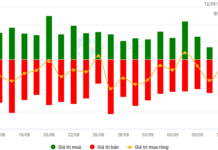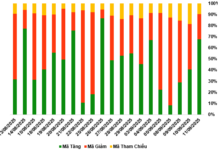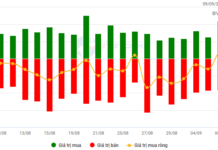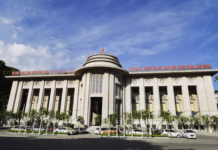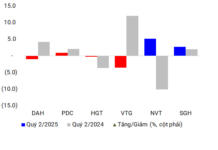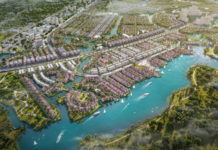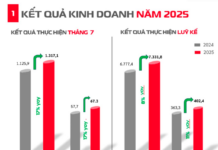The process of land clearance in Me Linh district is currently facing some difficulties.
Specifically, there are 9 parcels of land with an area of more than 30m2 that do not meet the criteria for resettlement. However, these parcels of land have irregular shapes, such as triangles, trapezoids, narrow fronts…which do not guarantee the construction and use of residential houses, as well as the livelihoods of rural households, production activities, and the population living in the area.
In addition, there is also a problem with building on garden land and ponds inherited from ancestors.
According to Me Linh district, most of the land in rural residential areas has its origins in land left by ancestors and has been used since before December 18, 1980. The land has a large area (on average nearly 500m2) and is granted a limit of 200m2 for residential purposes, while the remaining land is used for gardens and ponds (the limit is established based on the time when Me Linh district belonged to Vinh Phuc province, with limits of 200m2 for the flat region, 300m2 for the midland region, 400m2 for the mountainous region).

Vong dai 4 road passing through Me Linh district
During the use period, these parcels of land were divided and gifted, resulting in 73 separate parcels. Some of the parcels were originally garden land and ponds, but houses with 2-4 floors and auxiliary works have been built on the entire area.
Therefore, according to the Me Linh district’s People’s Committee, the application of compensation policies for low-value garden land/large land areas and compensation prices for construction works on low-value land or non-compensated land, as well as the non-consideration of resettlement, is challenging.
Lastly, there is also the issue of building houses independently on garden land and ponds.
In this case, 42 parcels of land that need to be reclaimed are all garden land and ponds within residential areas, originating from ancestral lands and have been granted certificates of land use rights. Families have converted the purpose of use to residential land, built houses, auxiliary works, and have been stably using them in the long term (20 out of 42 parcels). This leads to difficulties in applying compensation policies for low-value garden land/large land areas and compensation prices for works on low-value land or non-compensated land, as well as the non-consideration of resettlement. These major obstacles have resulted in disagreements from the affected households regarding land reclamation.
To resolve these difficulties and ensure the rights and benefits of affected households and individuals, the People’s Committee of Me Linh district proposes that Hanoi’s People’s Committee consider special support mechanisms and resettlement for affected households.
Specifically, the Me Linh district proposes allowing resettlement consideration for households and individuals with remaining land areas that have been distorted as presented above, with 1 resettlement unit of at least 80m2. At the same time, Me Linh district requests to re-recognize the residential land limit for the parcels of land that have been granted certificates of land use rights (only for this project).
The final proposal from Me Linh district is to request Hanoi to allow the application of special mechanisms (for independent garden and pond land), calculating the conversion of purpose of use for garden land and ponds to residential land, with a maximum area of 180m2 one time and deducting the conversion cost from the compensation plan, and considering the allocation of at least 1 resettlement unit with an area of 80m2.

